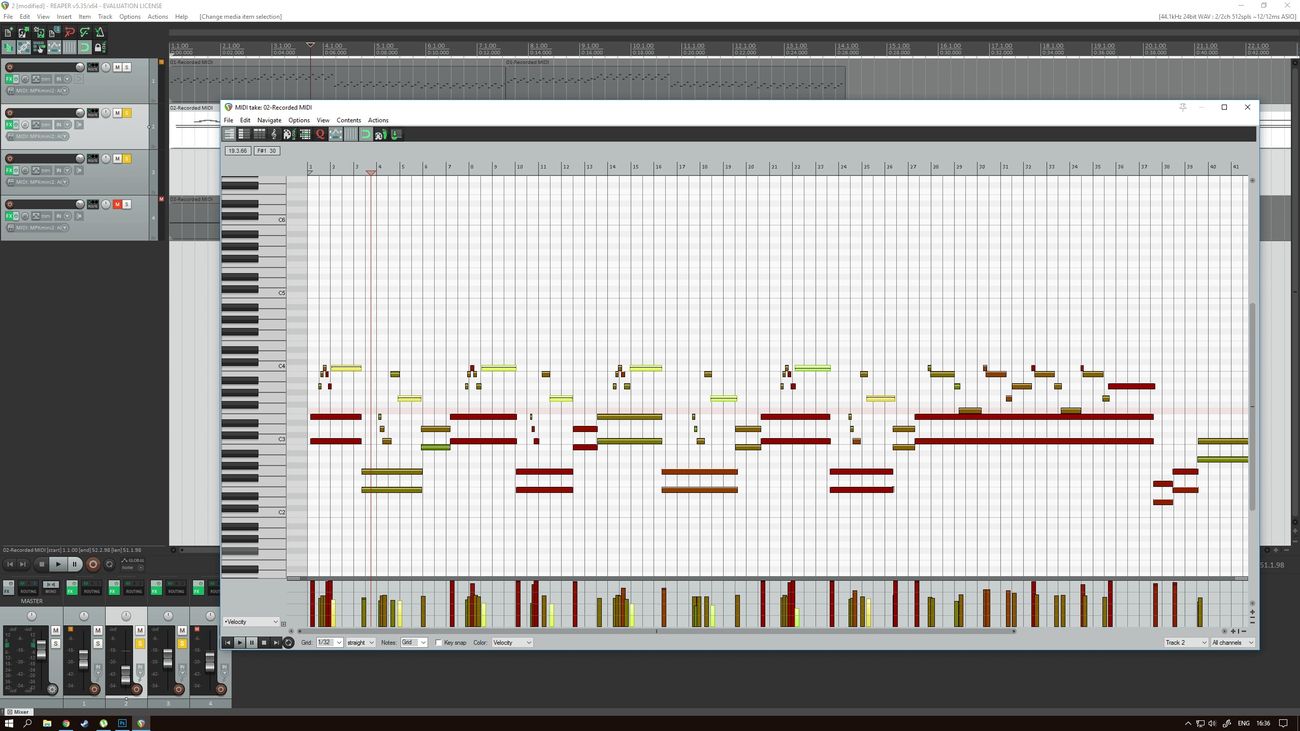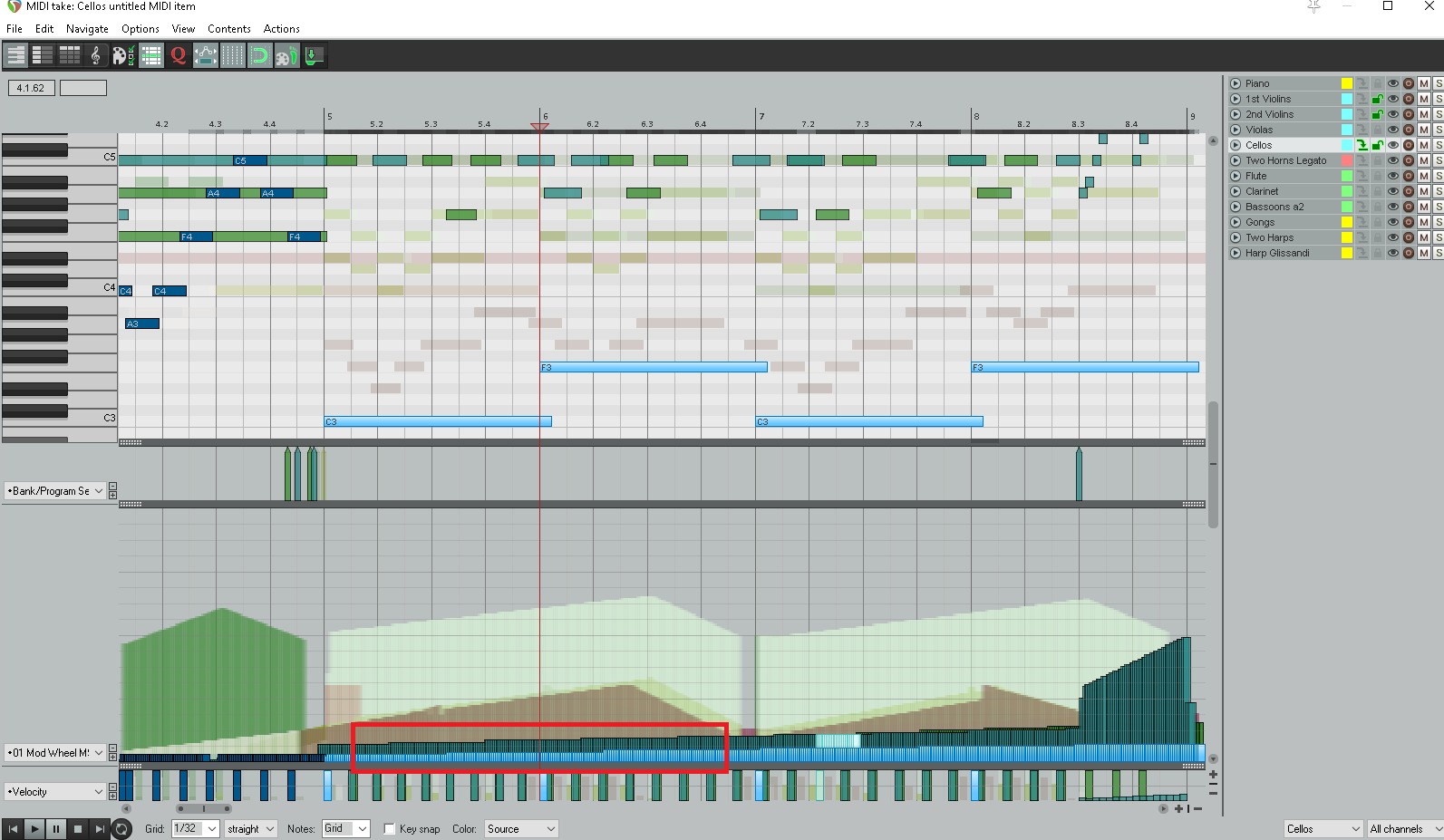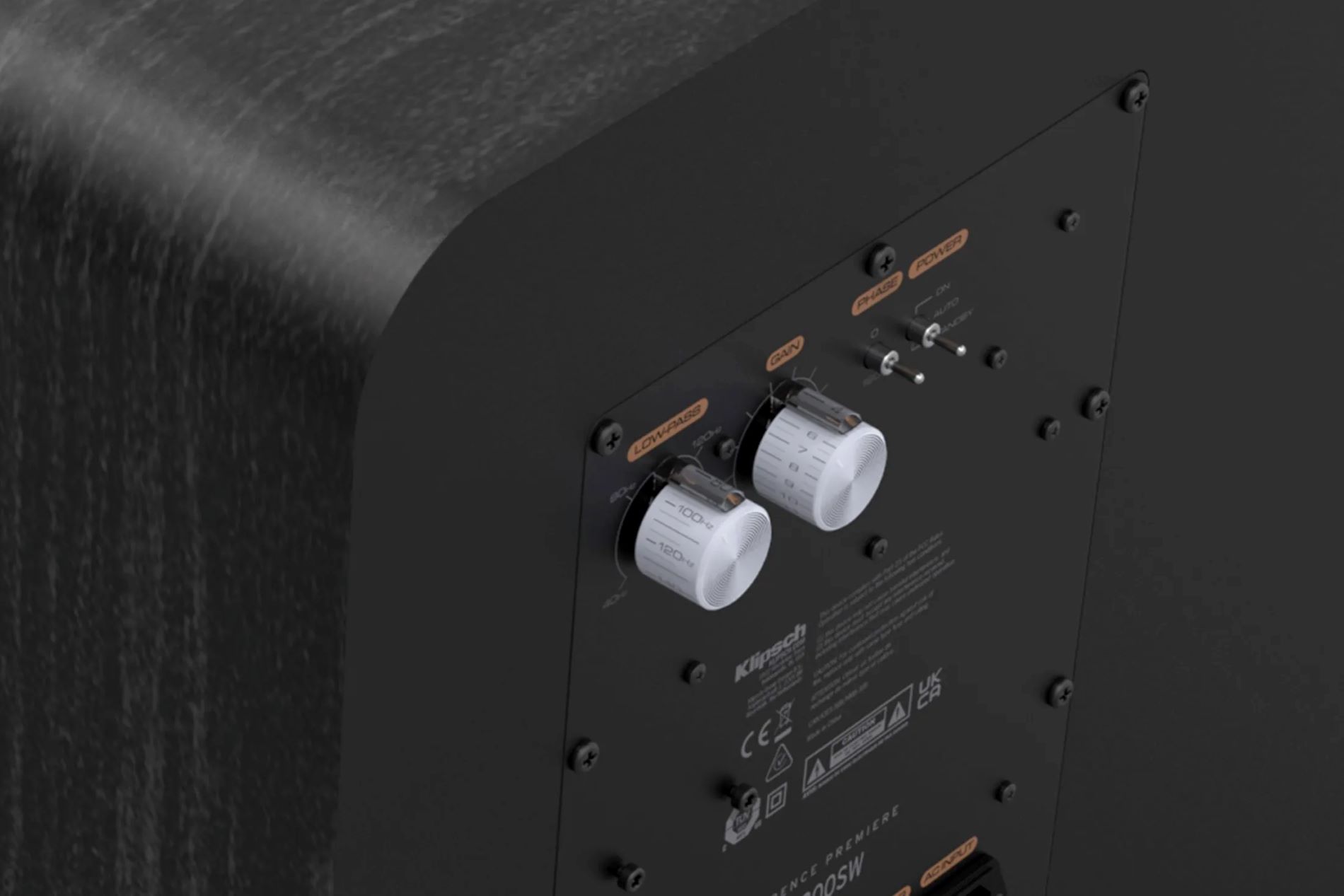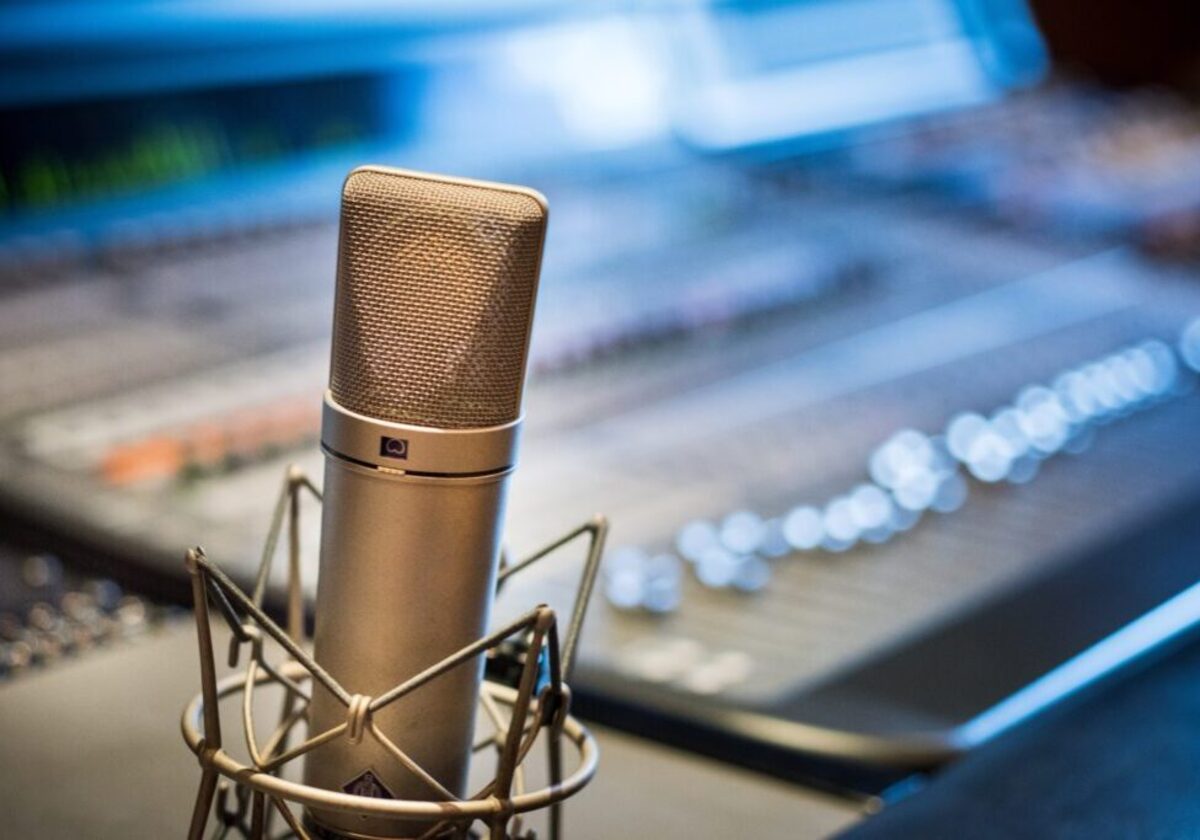Home>Production & Technology>MIDI>How To Set Up MIDI In Reaper
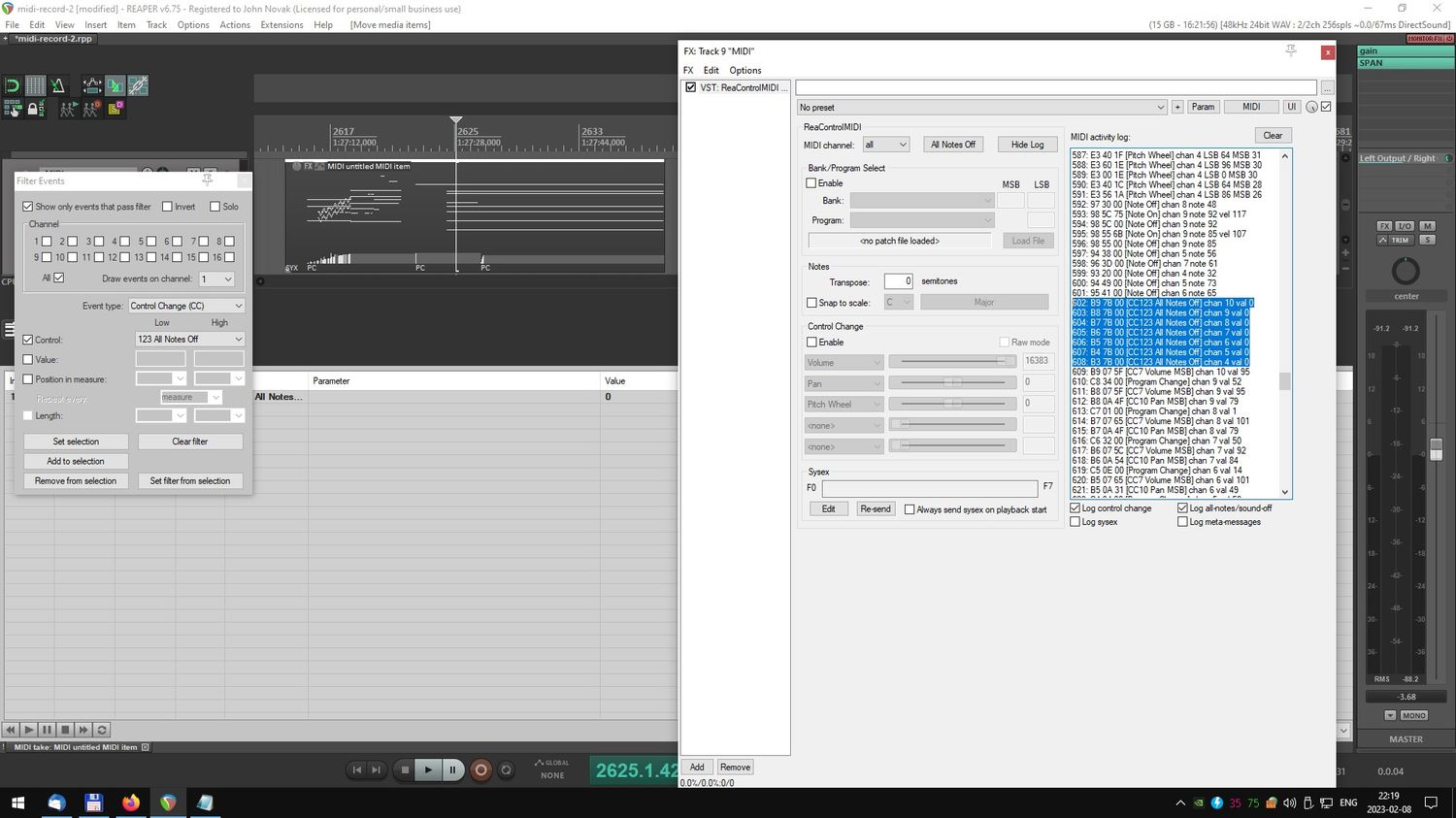

MIDI
How To Set Up MIDI In Reaper
Modified: February 22, 2024
Learn how to set up MIDI in Reaper with this step-by-step guide. Get your MIDI devices connected and start making music today.
(Many of the links in this article redirect to a specific reviewed product. Your purchase of these products through affiliate links helps to generate commission for AudioLover.com, at no extra cost. Learn more)
Table of Contents
Introduction
MIDI, which stands for Musical Instrument Digital Interface, has revolutionized the way music is created, recorded, and performed. It serves as a universal language for electronic musical instruments, computers, and other audio devices, allowing them to communicate and synchronize with each other. Whether you're a seasoned music producer, an aspiring songwriter, or a passionate hobbyist, understanding MIDI and how to set it up in your digital audio workstation (DAW) is essential for unleashing your creative potential.
In this comprehensive guide, we will delve into the intricacies of setting up MIDI in Reaper, a powerful and versatile DAW favored by musicians and audio engineers worldwide. From installing and configuring MIDI devices to recording and editing MIDI tracks, this article will equip you with the knowledge and skills to harness the full capabilities of MIDI within the Reaper environment.
By the end of this guide, you will have a solid grasp of how MIDI operates within Reaper, enabling you to seamlessly integrate MIDI instruments, controllers, and software to craft captivating musical compositions. Whether you're a pianist looking to capture the nuances of your performance, a beatmaker sculpting intricate rhythms, or a sound designer shaping ethereal textures, MIDI in Reaper opens up a world of creative possibilities.
So, let's embark on this journey into the realm of MIDI and unleash the boundless potential it offers within the dynamic landscape of music production. Get ready to immerse yourself in the art of MIDI as we explore the intricacies of setting up and leveraging this transformative technology within the Reaper DAW.
Installing and Setting Up MIDI Devices
Setting up MIDI devices in Reaper is the crucial first step in harnessing the power of MIDI within your music production workflow. Whether you're connecting a MIDI keyboard, drum pad controller, or any other MIDI-compatible instrument or hardware, Reaper provides a seamless platform for integrating these devices into your creative process.
To begin, ensure that your MIDI device is properly connected to your computer. This typically involves using a USB cable or MIDI interface to establish a connection between the device and your computer. Once the physical connection is established, Reaper's intuitive interface makes it easy to configure and utilize your MIDI devices.
Reaper simplifies the process of installing and setting up MIDI devices through its comprehensive device management features. To access the device settings, navigate to the "Options" menu and select "Preferences." Within the Preferences window, locate the "MIDI Devices" section, where you can manage the input and output settings for your MIDI devices.
Upon entering the MIDI Devices section, you'll have the ability to add, enable, and configure your MIDI devices. By clicking the "Enable input from this device" option, you can activate MIDI input from your connected device, allowing Reaper to recognize and communicate with it. Additionally, you can specify the MIDI input and output ports associated with your device, ensuring seamless bi-directional communication between your MIDI hardware and Reaper.
Reaper's flexibility extends to accommodating multiple MIDI devices, enabling you to integrate a diverse array of instruments and controllers into your production environment. Whether you're utilizing a MIDI keyboard for melodic composition, a pad controller for triggering drum samples, or a MIDI foot controller for hands-free operation, Reaper empowers you to configure and harness the full potential of your MIDI arsenal.
Furthermore, Reaper's support for virtual MIDI devices opens up new avenues for creative exploration. Virtual MIDI devices, such as software-based MIDI controllers and sequencers, can be seamlessly integrated into Reaper, expanding your sonic palette and enhancing your production capabilities.
In essence, installing and setting up MIDI devices in Reaper is a streamlined process that empowers you to seamlessly integrate a wide range of MIDI instruments, controllers, and software into your music production ecosystem. By leveraging Reaper's intuitive device management features, you can establish a robust MIDI infrastructure that serves as the foundation for your creative endeavors.
Configuring MIDI Preferences
Configuring MIDI preferences in Reaper is a pivotal aspect of optimizing the MIDI environment to align with your specific workflow and hardware setup. By customizing the MIDI preferences, you can fine-tune the behavior of MIDI devices, input/output settings, and other crucial parameters, ensuring a seamless and efficient MIDI experience within Reaper.
To access the MIDI preferences in Reaper, navigate to the "Options" menu and select "Preferences." Within the Preferences window, locate the "MIDI Devices" section, where you can delve into the intricacies of MIDI preference configuration.
One of the key elements of MIDI preference configuration is the management of MIDI input and output devices. In this section, you can specify the default input and output devices, allowing you to streamline the MIDI communication process. By designating the primary MIDI input device, you ensure that MIDI data from your preferred controller or instrument is seamlessly recognized by Reaper. Similarly, setting the default MIDI output device enables Reaper to transmit MIDI data to the designated hardware or software destinations with precision and reliability.
Furthermore, the MIDI preferences in Reaper encompass advanced settings that cater to diverse production scenarios. For instance, you can configure MIDI routing options, enabling you to define how MIDI data is routed between tracks and devices within your project. This level of customization empowers you to orchestrate intricate MIDI signal paths, facilitating complex routing schemes and creative signal manipulation.
Reaper's MIDI preference settings also encompass latency management, an essential consideration for real-time MIDI performance and recording. By adjusting the MIDI hardware output settings, you can optimize latency parameters to minimize delay, ensuring a responsive and immersive MIDI performance experience.
Moreover, Reaper's MIDI preference configuration extends to encompassing channel mapping, MIDI clock synchronization, and other nuanced settings that cater to the specific requirements of your MIDI setup. Whether you're working with multi-channel MIDI instruments, synchronized MIDI devices, or intricate MIDI routing configurations, Reaper's MIDI preferences provide the flexibility and control needed to tailor the MIDI environment to your exact specifications.
In essence, configuring MIDI preferences in Reaper empowers you to sculpt a tailored MIDI ecosystem that aligns with your creative vision and technical requirements. By delving into the intricacies of MIDI preference settings, you can optimize MIDI input/output behavior, routing configurations, latency management, and other critical parameters, ensuring a cohesive and responsive MIDI experience within the dynamic realm of music production.
Creating a MIDI Track
In Reaper, the process of creating a MIDI track is a fundamental step in harnessing the expressive power of MIDI within your music production endeavors. Whether you're looking to compose intricate melodies, sculpt dynamic rhythms, or explore the sonic possibilities of virtual instruments, creating a MIDI track provides the canvas upon which your musical ideas can flourish.
To initiate the creation of a MIDI track in Reaper, navigate to the main toolbar and select the "Track" menu. From the dropdown menu, choose "Insert New Track." Alternatively, you can utilize the keyboard shortcut (Ctrl+T on Windows, Command+T on Mac) to swiftly create a new track within your project.
Once the new track is created, you have the option to specify the track type. In the context of MIDI, you would select "MIDI" as the track type, signaling to Reaper that this track is intended for MIDI data manipulation and playback.
Upon designating the track as a MIDI track, you gain access to a myriad of creative possibilities. Reaper empowers you to seamlessly integrate virtual instruments, MIDI hardware, and software-based synthesizers into the newly created MIDI track. By leveraging Reaper's robust instrument plugin support, you can effortlessly load virtual instruments and samplers directly onto the MIDI track, expanding your sonic palette and unleashing a world of musical potential.
Furthermore, Reaper's MIDI track interface provides intuitive access to MIDI editing tools, enabling you to craft and manipulate MIDI data with precision and fluidity. Whether you're refining note sequences, adjusting velocity and modulation, or delving into intricate MIDI automation, Reaper's MIDI track interface serves as a versatile hub for sculpting expressive musical performances.
In addition to accommodating virtual instruments, Reaper's MIDI track functionality seamlessly integrates with external MIDI hardware, allowing you to harness the expressive capabilities of physical MIDI controllers, synthesizers, and drum machines. By linking your external MIDI devices to the MIDI track, you can capture performances, trigger samples, and explore real-time MIDI manipulation within the dynamic environment of Reaper.
In essence, creating a MIDI track in Reaper lays the foundation for immersive musical exploration, providing a versatile platform for integrating virtual instruments, MIDI hardware, and expressive MIDI editing tools. Whether you're embarking on a melodic composition, crafting intricate rhythms, or shaping evocative soundscapes, the MIDI track in Reaper serves as a gateway to boundless creative expression within the realm of music production.
Recording MIDI
Recording MIDI in Reaper opens up a realm of creative possibilities, enabling you to capture expressive musical performances, intricate melodic sequences, and dynamic rhythmic patterns with precision and fluidity. Whether you're a pianist seeking to immortalize a captivating melody, a beatmaker crafting infectious grooves, or a sound designer shaping ethereal textures, Reaper provides a seamless platform for capturing MIDI data and translating your musical visions into tangible compositions.
To initiate MIDI recording in Reaper, ensure that a MIDI track is selected within your project. Once the MIDI track is primed for recording, you can engage the MIDI input from your preferred controller or instrument. Whether you're utilizing a MIDI keyboard, pad controller, or any other MIDI-compatible device, Reaper's streamlined recording workflow empowers you to seamlessly capture your musical performances with ease.
Upon engaging MIDI recording, Reaper diligently captures every nuance of your performance, translating your musical gestures into MIDI data in real time. This seamless recording process ensures that the subtleties of your performance, including note dynamics, timing variations, and expressive articulations, are faithfully preserved within the MIDI data, preserving the authenticity and emotive qualities of your playing.
Reaper's MIDI recording functionality encompasses comprehensive features that cater to diverse recording scenarios. Whether you're capturing single-note melodies, intricate chord progressions, or complex multi-layered performances, Reaper's versatile MIDI recording capabilities adapt to the nuances of your musical expressions, ensuring that every facet of your performance is faithfully transcribed into the MIDI domain.
Furthermore, Reaper's MIDI recording interface provides intuitive tools for post-recording refinement, enabling you to fine-tune and edit the recorded MIDI data with precision and flexibility. From adjusting note velocities and durations to refining timing and quantization, Reaper's MIDI editing features empower you to sculpt and polish your recorded performances, elevating them to new levels of musical expression and coherence.
In essence, recording MIDI in Reaper transcends mere capture; it encapsulates the essence of musical expression, enabling you to immortalize your performances with fidelity and finesse. Whether you're capturing a fleeting moment of inspiration, refining a meticulously crafted composition, or exploring spontaneous improvisation, Reaper's MIDI recording capabilities serve as a conduit for translating your musical musings into timeless creations.
Editing MIDI
In the realm of music production, the ability to intricately shape and refine MIDI data is a cornerstone of creative expression. Within Reaper, the process of editing MIDI transcends mere manipulation; it serves as a dynamic canvas for sculpting musical performances, refining compositions, and infusing expressive nuances into every note and rhythm.
Upon capturing MIDI performances or importing MIDI data into your project, Reaper empowers you to delve into a myriad of editing tools and functionalities, providing a comprehensive toolkit for refining and shaping MIDI data with precision and creativity.
MIDI Note Editing
Reaper's intuitive MIDI note editing interface offers a wealth of capabilities for refining note sequences, adjusting durations, and fine-tuning the expressive qualities of individual notes. By selecting and manipulating MIDI notes within the piano roll or notation view, you can effortlessly adjust note start and end points, refine note velocities to convey nuanced dynamics, and articulate subtle variations in note expression.
Quantization and Timing Adjustment
The quantization features within Reaper's MIDI editing arsenal enable you to align MIDI notes to a specified grid, ensuring rhythmic precision and cohesion within your compositions. Whether you're seeking to tighten up rhythmic performances or infuse swing and groove into your rhythms, Reaper's quantization tools provide the flexibility to tailor the timing and feel of MIDI data to suit your musical vision.
MIDI CC and Automation Editing
Beyond note-based editing, Reaper facilitates comprehensive control over MIDI continuous controller (CC) data and automation. By accessing the MIDI CC lane within the MIDI editor, you can intricately sculpt modulation, expression, and parameter control data, enriching your MIDI performances with dynamic articulations and sonic nuances. Additionally, Reaper's automation features extend to encompassing MIDI CC automation, enabling you to seamlessly integrate expressive MIDI control changes into your compositions.
MIDI Item Editing
Reaper's MIDI item editing capabilities extend beyond the boundaries of individual MIDI notes, empowering you to manipulate entire MIDI segments with fluidity and precision. Whether you're refining the arrangement of MIDI phrases, adjusting the timing and duration of MIDI segments, or exploring creative variations within your compositions, Reaper's MIDI item editing features provide a cohesive platform for seamless composition refinement and arrangement exploration.
Real-time Performance Control
Reaper's support for real-time MIDI performance control within the MIDI editor allows for spontaneous expression and experimentation. Whether you're manipulating MIDI parameters in real time, exploring live MIDI recording and overdubbing, or engaging with MIDI hardware controllers to shape performances, Reaper's real-time MIDI editing capabilities foster a dynamic and immersive creative environment.
In essence, the process of editing MIDI within Reaper transcends traditional manipulation; it embodies a fluid and expressive journey of musical refinement and creativity. By leveraging Reaper's versatile MIDI editing tools, you can breathe life into your compositions, infuse expressive nuances into every note, and sculpt performances with finesse and authenticity. The art of MIDI editing within Reaper is a testament to the boundless potential of creative expression within the dynamic landscape of music production.
Using MIDI Controllers
MIDI controllers serve as the bridge between human expression and digital creativity, empowering musicians and producers to interact with virtual instruments, software parameters, and performance tools in a tactile and expressive manner. Within the realm of music production, Reaper's seamless integration of MIDI controllers unleashes a world of dynamic possibilities, enabling artists to shape and manipulate sound with intuitive precision and artistic finesse.
Expressive Performance
MIDI controllers encompass a diverse array of instruments, ranging from keyboard controllers and drum pads to MIDI guitars, wind controllers, and innovative multidimensional devices. These controllers act as extensions of the performer's musical intent, translating gestures, touch, and nuanced articulations into MIDI data that interfaces with Reaper's virtual instruments and effects.
By leveraging MIDI controllers within Reaper, musicians can breathe life into their performances, infusing melodies with expressive phrasing, shaping rhythms with dynamic accents, and exploring the sonic nuances of virtual instruments with unparalleled fluidity. Whether it's the responsive touch of a weighted MIDI keyboard, the rhythmic precision of a pad controller, or the nuanced expression of a breath-controlled MIDI wind instrument, Reaper's support for MIDI controllers amplifies the emotive qualities of musical performances, fostering a deeper connection between the artist and their sonic canvas.
Real-time Parameter Control
Beyond performance, MIDI controllers serve as versatile tools for real-time parameter manipulation within Reaper's production environment. Knobs, faders, touch strips, and other control elements on MIDI controllers provide tactile access to software parameters, enabling artists to modulate virtual instrument settings, effect parameters, and mixer controls with immediate responsiveness.
This real-time parameter control fosters a dynamic and interactive production workflow, allowing musicians to sculpt sounds, shape arrangements, and explore sonic textures with hands-on precision. Whether it's adjusting filter cutoff frequencies, modulating synth parameters, or automating effect parameters in real time, Reaper's seamless integration of MIDI controllers empowers artists to engage in expressive sonic sculpting, blurring the lines between performance and production.
Creative Exploration
Furthermore, the integration of MIDI controllers within Reaper extends beyond traditional instrument emulation, encompassing innovative and experimental controllers that redefine the boundaries of musical expression. From multidimensional MIDI controllers that capture intricate gestures and movements to custom-built controllers tailored to specific production workflows, Reaper's flexibility accommodates a diverse spectrum of MIDI controller innovations.
This embrace of creative exploration encourages artists to push the boundaries of sonic manipulation, leveraging MIDI controllers to engage in unconventional performance techniques, experimental sound design, and immersive live production experiences. Whether it's exploring gestural control of sound parameters, integrating custom-built MIDI interfaces, or delving into the realm of multidimensional expression, Reaper's support for MIDI controllers fosters an environment of boundless creativity and sonic innovation.
In essence, the utilization of MIDI controllers within Reaper transcends mere technical integration; it embodies a symbiotic relationship between human expression and digital creativity. By embracing the expressive potential of MIDI controllers, musicians and producers can embark on a journey of sonic exploration, infusing their productions with emotive performances, hands-on parameter manipulation, and groundbreaking creative experimentation. Within the dynamic landscape of music production, Reaper's support for MIDI controllers amplifies the artistry and expressive depth of musical creation, paving the way for immersive and transformative production experiences.
Conclusion
In conclusion, delving into the realm of MIDI within Reaper unveils a tapestry of creative possibilities and technical finesse, empowering musicians, producers, and sound designers to sculpt immersive sonic landscapes and capture expressive musical performances with precision and fluidity. Throughout this comprehensive guide, we've embarked on a journey through the intricacies of setting up, recording, and manipulating MIDI within the dynamic environment of Reaper, unraveling the transformative potential of MIDI technology within the realm of music production.
From the foundational steps of installing and configuring MIDI devices to the seamless integration of MIDI controllers and the nuanced art of MIDI editing, Reaper serves as a versatile and intuitive platform for harnessing the expressive power of MIDI. Whether capturing intricate melodies, shaping dynamic rhythms, or exploring the sonic nuances of virtual instruments, Reaper's robust MIDI capabilities provide a cohesive and immersive canvas for musical exploration and production.
The process of setting up MIDI devices in Reaper lays the groundwork for a seamless integration of MIDI instruments, controllers, and software, fostering a diverse and interconnected MIDI ecosystem that adapts to the unique requirements of each production scenario. By configuring MIDI preferences, users can tailor the behavior of MIDI devices, routing configurations, and latency management, ensuring a cohesive and responsive MIDI environment that aligns with their creative vision.
Creating and recording MIDI tracks within Reaper serves as a gateway to boundless musical expression, providing a versatile platform for capturing performances, integrating virtual instruments, and shaping compositions with finesse. The art of MIDI editing within Reaper transcends traditional manipulation, embodying a dynamic journey of musical refinement and creativity, empowering users to infuse expressive nuances into every note and rhythm.
Furthermore, the seamless integration of MIDI controllers within Reaper amplifies the emotive qualities of musical performances, fostering a deeper connection between artists and their sonic canvas, while enabling real-time parameter control and creative exploration.
In essence, the art of MIDI within Reaper transcends technical proficiency; it embodies a symbiotic relationship between human expression and digital creativity. By embracing the expressive potential of MIDI technology, musicians and producers can embark on a transformative journey of sonic exploration, infusing their productions with emotive performances, hands-on parameter manipulation, and groundbreaking creative experimentation. Within the dynamic landscape of music production, Reaper's support for MIDI amplifies the artistry and expressive depth of musical creation, paving the way for immersive and transformative production experiences.

